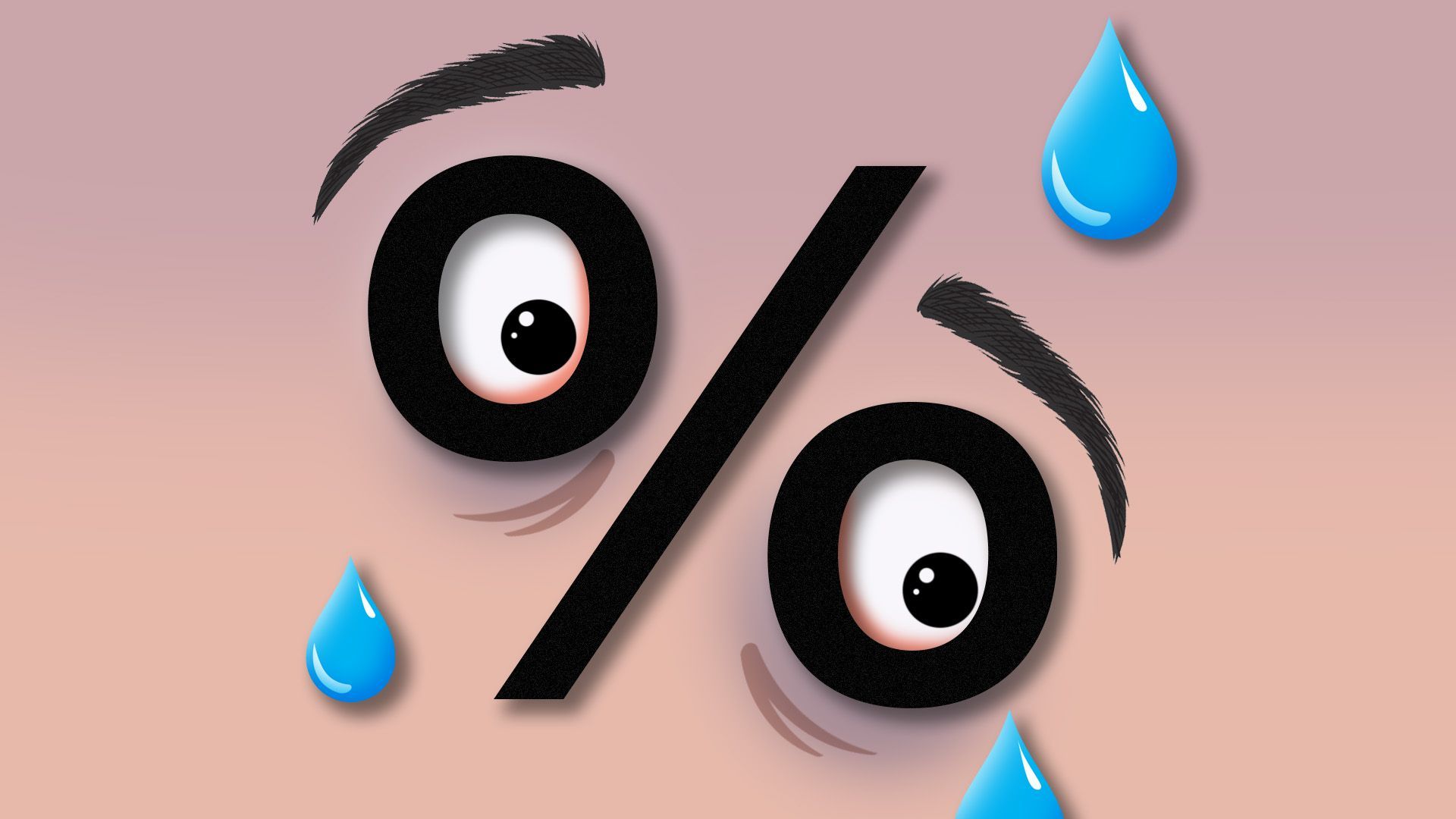
Illustration: Sarah Grillo/Axios
The big rise in interest rates this year has drawn renewed attention to the balance sheets of banks in general — and of Bank of America in particular.
Why it matters: If you look at the market value of BofA's assets, the bank starts to look weaker than would befit its too-big-to-fail status.
The big picture: BofA has an $840 billion securities portfolio that's still yielding less than 3%. "In a rising rate environment, BAC could get into serious problems," says independent bank analyst Christopher Whalen.
- Whalen notes that much of the bank's mortgage portfolio, which includes a lot of mortgages priced at less than 3%, has a projected average life of more than 15 years, thanks to the lock-in effect.
- BofA didn't respond to Axios' inquiry.
Follow the money: BofA has an official book value of $265 billion as of the first quarter — but that assumes that some $1.6 trillion of bonds and loans can be valued at par.
- Every quarter, BofA has to disclose the fair market value (FMV) of those bond and loan assets — and that number is much lower than the par value.
By the numbers: In the fourth quarter, the FMV of BofA's bonds and loans was $119 billion lower than the par value.
- In the third quarter, when rates were closer to their current levels, the FMV losses were $162 billion, per calculations by portfolio manager Jack Ciesielski.
- Meanwhile, BofA is also charging off more than $1 billion per quarter in bad loans.
The impact: BofA's mark-t0-market book value looks closer to $100 billion than $265 billion.
- The bank's $223 billion in tier 1 capital also looks overstated by a similar amount, were its assets to be valued at current market interest rates.
The bottom line: BofA is more than big enough to hold all these bonds and loans to maturity, and there's a case to be made that therefore it has no need to care about what happens to their value along the way.
- All the same, it's hard for any bank to make money if its assets are yielding 3% while its funding cost is north of 6%.
- By holding onto the mortgages yielding around 3%, says Whalen, BofA "has essentially crippled its asset returns for years to come."
- "If your asset returns are below peer and your credit losses are above peer, then where does that leave you? In a very bad place."
